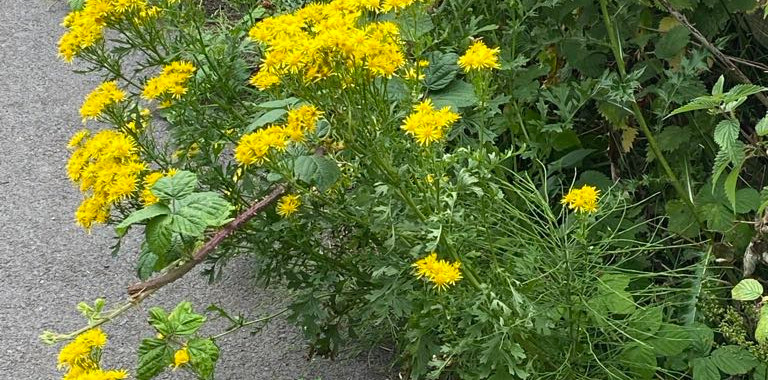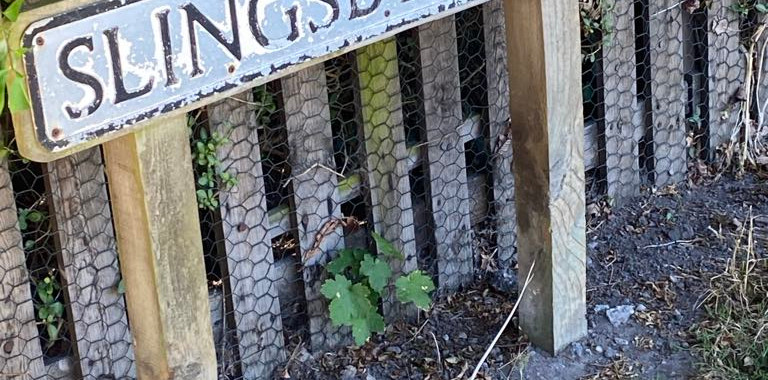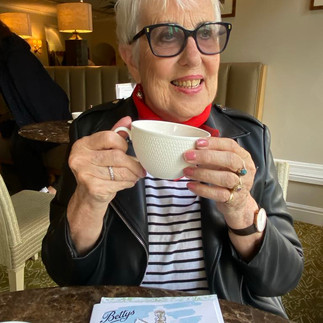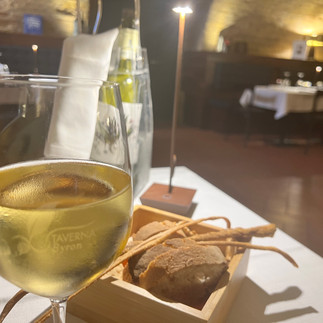- Art - Culture - Tourism
- Jul 30
- 5 min read
Updated: Aug 5

By Marysia Zipser
30 July 2025
Nottingham
Photography by Marysia Zipser
Please click on photographs to enlarge.
Setting the scene. It was 19 years ago when I last visited Harrogate for a two night stay and during the days I toured three Robert Adam (1728-1792) interiors at historic Nostell Priory, Harewood House and Newby Hall, led by Gail Bent interior designer and lecturer. It was an illuminating learning experience and one I won’t forget. Historic houses, towns and parklands always inspire me.
Early July I revisited the town staying in a house, for nine days, overlooking The Stray. Missing my gym sessions during mornings back in Beeston-Nottingham, I easily slipped into a daily routine of walking for an hour or more every morning on the Stray. With walkers, runners, and dogs passing me along Slingsby Walk and across the grassland by and in between the majestic trees lining the pathways, it became relaxing and reflective, and yes, addictive in a lovely way. Like watching a moving picture show, occasionally stopping to sit down on a park bench or standing still just to breathe in, and contemplate the scenes around me and make up character stories in my head about the walkers and their dogs.
A little bit of history and background of Harrogate. Harrogate is a town which has promoted health and fitness over the last few centuries. It’s well known for its history as a fashionable spa town. In the 14th century Harrogate consisted of just a few cottages located within the Royal Forest of Knaresborough, with its people making their living through agriculture, forestry and weaving. Knaresborough had an established community around its medieval castle and church. The Royal Forest had passed into the hands of John of Gaunt, Duke of Lancaster, in 1369. The forest remained in the hands of the Duchy of Lancaster, which still owns the freehold of the Stray.
And then in 1571 William Slingsby discovered the Tewit Well and recognised the medicinal powers of the waters. And what followed was the development of Harrogate taking a new direction. The knowledge of the well began to spread and physicians identified further springs including St John’s Well, the chalybeate springs and the Old Sulphur Well, now in the Royal Pump Room Museum. Visitor numbers increased at a steady rate from the 1660s through the Georgian period and Queen Victoria’s reign. More spa buildings were built to meet demand and of course accommodation and hotel buildings. The railways brought loads more visitors to this fashionable spa town and to enjoy other aspects of the society with its daily and evening entertainment. The railway meant that the wealthy could live in Harrogate and commute to their work in the industrial towns of West Yorkshire, such as Leeds or Bradford, on a weekly or daily basis.
The town has evolved to become a major conference and events destination. The Harrogate Convention Centre, which opened in 1982, hosts a variety of events, including conferences, exhibitions, and concerts. Its famous Turkish Baths (built 1897) still remain and are open for treatments and therapies.
More about The Stray. The Stray is 200 acres of grassland, once part of the Forest of Knaresborough, which surrounds the centre of Harrogate. Because of its importance to the spa it is protected for use by the public by an Act of Parliament of 1778. This stated that the 200 acres should “forever remain open and unenclosed and all persons whomsoever shall and may have free access at all times to the said springs and be at liberty to use and drink the waters there arising”.
The original Forest Award allotted grazing rights (or "gates") on the unenclosed land, so that animals on the 200 acres were free to stray without tether, giving rise to the popular name for the land, the Stray (a term used elsewhere in Yorkshire for unenclosed land, such as at York and Redcar).
The original forest award has been changed over the years, but the idea of providing 200 acres “open and unenclosed" has survived despite many attempts at encroachment. The most famous of these was in 1933 when the council planted flowerbeds on West Park Stray. These were resented so much that the Stray Defence Association was founded. In the following year, when the council planned a further 5,000 square yards, Stray Defence candidates stood at the local elections - and won. As a result of this victory, the flowerbeds were removed from the Stray and wartime emergencies allowed further changes. Trenches were dug in 1938 in fear that German planes might use the open land as a runway and much of the land was ploughed up to grow crops during World War Two.
Over the years the Stray has been used for various sporting and leisure activities.Oxen were roasted to celebrate the Golden and Jubilees of Queen Victoria and also in 1902 to celebrate the end of the Boer War. Other activities to take place on the Stray have included balloon ascents, air races, horse racing, donkey riding, cycling, circuses and fairs.
I hope my photographs of the Stray will provide you with enough evidence of this beautiful place to tempt you to visit too. I’ve included shots of several covered wells on which are explanatory iron plaques.
Further attractions. The town centre you can walk to easily where there are a multitude of places to visit and experience to add to your history, health, beauty, nature, gardens, art, cultural, and food and drink appetites. Not forgetting the famous and original Betty’s on Parliament Street, with a fascinating 100 year old history.
I would like to suggest you visit first the very interesting Royal Pump Room (The Harrogate Museum) which charges just £4 for adults and £3 for children aged 5-16, disabled visitors, senior citizens, and students. Their free brochure provided much reference to this blog. Managed by North Yorkshire Council which also manages the Mercer Art Gallery, Knaresborough Castle and Courthouse Museum and Skipton Town Hall.
My next North Yorkshire blog will feature Knaresborough and its breathtaking views along the River Nidd and upwards, and from the medieval castle ruins and park high above looking across and downwards.
With gracious thanks to my dear friend who was a valued host and guide during my Harrogate stay.
Marysia Zipser
Founder & ACT Ambassador
E:mail : marysia@artculturetourism.co.uk
“Harrogate is the queerest place with the strangest people in it, leading the oddest lives of dancing, newspaper reading and dining.” ~ Charles Dickens in 1858 after visiting Harrogate on a lecture tour.
Please feel free to share this article blog via social media icon links and/or write any comments or questions in the Comment Box below. Thank you.
Links:
https://visitnorthyorkshire.com/index/mercer-art-gallery their current art exhibition, entitled H.A.P.P.Y., by international artist Liz West, is stunning, so do visit and take your children too. It runs until 5 October.
https://www.h2kbotanicals.com/ Montpellier Parade
https://oldesweetshop.co.uk/ & gifts, Montpellier Parade
- Art - Culture - Tourism
- Jul 18
- 7 min read
Updated: Nov 25
By Stuart Baird
Nottingham, 18th July 2025
Photographs by Stuart Baird

Byron is one of the highest profile literary figures in the world and attracts attention from global media, literary and cultural travellers from across the world. His outrageous behaviour, including multiple affairs with the wives of the wealthy, drinking from the skull of a monk on the Italian Grand Tour, as well as his poetry and cultural impact continues to capture the imagination worldwide.
He is one of many reasons Nottingham was declared a UNESCO City of Literature in 2015 and continues to draw in cultural visitors from across the globe. What is probably not as well-known is his connection with Ravenna – a stunning city on the east (Adriatic) coast of Italy, south of Venice – itself a UNESCO World Heritage centre with eight UNESCO ancient monuments.
A multimillion-pound renovation of Byron’s Ravenna bolthole as well as the development of a Byron taverna has revived interest in the poet in the UK, Italy and across the world.
Byron’s Nottinghamshire’s roots

While Byron’s Nottinghamshire home, Newstead, represented his last connection with his homeland, it also represented debt and decay. He wrote in 1807, "Newstead! fast-falling, once-resplendent dome! Hail to thy pile! more honour'd in thy fall Than modern mansions in their pillar'd state, Proudly majestic frowns thy vaulted hall, Scowling defiance on the blasts of fate."
He is acknowledged as being the first ‘rock star poet’ and ‘international playboy’ – famous in his own lifetime, with his works selling tens of thousands on the first day of print - something modern poets can only dream of.
Conversely when he found home in Ravenna, he found peace and revival and wrote some of his famous works there. He wrote of his “romantic solitude” as he rode through the pine forests of Ravenna, reminding him of his rides in Nottinghamshire.

Tourism between the UK in Italy has been established for many centuries and 6.2 million Brits will make their ‘Grand Tours’ every year, 1.7 million Italians will cross the channel to come visit the UK in return.
In the East Midlands, tourism is worth £5bn to the local economy (Derbyshire and Nottinghamshire) and supports 55,000 jobs with 71 million visits to the region.
While some of Italy’s main locations struggle with over-tourism, chiefly Venice, Florence and Rome – and in Pompeii restrictions on daily numbers are being put in place – Ravenna has managed to find the perfect harmony of greeting the discerning traveller. To quote Shakespeare ‘to your own self, be true – then you cannot be false to anyone’: while staying true to itself, Ravenna is an ancient but also modern living, breathing community.
Two hundred years ago Byron commented in one of his many letters: "Ravenna retains more of its old Italian style than any other city. It remains out of the way of travellers and therefore that style has remained original."

That may change. But possibly not. In April this year their Royal Highnesses the King and Queen Camilla travelled to Ravenna – the only place they visited outside of Rome. And while the King marvelled at 5th century Byzantine churches, the Queen spent so much time in the Byron centre – which is also a centre for Italian nationalism – she had to be urged away by her courtiers in order to stick to their time table.
Finding solace and inspiration in Ravenna

Why did Byron travel to Ravenna in the first place? Well, after several affairs in Venice, he moved to the Palazzo Guiccioli home of the 21-year-old Countess Guiccioli, where he lived between 1819 to 1821 and was visited by Shelley, as well as others. Married off to an elderly Count at 19, Teresa Gamba was besotted with Byron and after his untimely death in Greece, she made the pilgrimage back to Newstead where she collected ferns to bring back to her home in Italy.

The restored Palazzo is an immersive Byron experience with memorabilia, relics, texts and personal belongings of Byron. Videos spring to life and you find yourself part of a throng of dancers at the Venice Carnavale. When you pick up a nearby quill Byron’s words flow on a huge screen as you yourself have written them. And if you really want a treat,what do you can see relics from Byron’s time there yourself – some more appealing than others.
Locks of his hair were collected and personal items, as well as his prolific letter writing. Following a three-hour swim in the blistering Italian sun, the Countess saved fragments of Byron’s peeling skin.

The beautiful taverna, sited in the cellars where Byron’s menagerie of monkeys, horses, dogs,
cats, cranes and peacocks roamed, is run by Massimo Serena Monghini, who is famed by Italians for his nearby Osteria. It is a wonderfully relaxed environment with the trademark Italian precision in friendly service and wonderful food.
Thankfully, the visiting Brits don’t need a peerage to dine there with a menu for all tastes marked by simplicity and love. The most expensive wine on the menu was Euro 100.
To step into Ravenna feels like being welcomed into the home of an old friend or favourite family
member, with warmth, love and charm. Strangers, neighbours or passersby will greet one another ‘buongiorno, comestai?’ ‘bene, bene!’. Ravenna feels like home.
Byron himself was inspired while here, rejuvenated in his passions and in his poetry
while igniting his love for the nationalism of the emerging Italian and Greek nations.
The Grand Tour was a way of the rich British to educate themselves and immerse themselves in culture. It started a love affair between the two countries which grows deeper in affection every year that passes. For the British travellers it captivates, it leaves an indelible mark – I am just one of many.
If you want to see a physical love letter to Italy, look no further than our stately homes in the East Midlands – from Calke and Kedleston and on and across all England, Scotland and Wales, where the rich came home from Italy determined to recreate its architecture and somehow capture Italy in England forever in its landscape as much as their hearts.
A lifelong Grand Tour
I have been on my own ‘Grand Tour’ of Italy for the last 29 years, covering ground even my forebears would envy. From Garda and Verona in the north, the four corners of Tuscany, Venice, Rome, the Amalfi coast, Sardinia, Sicily and Calabria. I even cheered at the modern Coliseum of the San Siro watching my team take on Paolo Maldini’s AC Milan.
But thanks to a wonderful and amazing personal guide, Patrizia Poggi, a native of Ravenna and an ACT Advisor, as well as the warmth and charm of Ravenna as well as its deep cultural history, it has taken a firm hold in my heart – just as it did Byron.
While I took in Dante’s tomb and the main sights of Ravenna, it was a privilege to meet some of the interesting characters and families from the city.
Matteo Tonini, who is now 88 and who has run Tonini Antiquarian Bookshop his whole life in the heart of the city, and Elisabetta Gulli Grigioni, anthropologist, museologist, and writer, who has a surprising collection of artifacts is tied to folk tradition and its symbols, particularly that of the heart.

A father, Fernando and son Umberto, of the Turicchia family of the Antica Trattoria Al Gallo 1909, a historic Italian restaurant: it was without a doubt the best and most memorable restaurant I have ever been in. A beautiful space with beautiful people creating an experience, not just a meal. La vita e bella.

And finally, a meeting and lunch at the Ravenna Yacht Club with learned scholar Cesare Poppi, an anthropologist, who spent many happy years at University of East Anglia, Norwich, UK: the perfect company, in a perfect place.
The modern cultural pilgrimage
With its deep history, its wonderful squares and friendly inhabitants, I discovered the only downside of Ravenna… like Byron, I had to leave. As Andrea Bocelli sings – con te partirò – I think I left a piece of my heart with Elisabetta for her collection.

He left to fight for Greek independence and heroically died of a fever before he could head to battle. The Countess never forgot the love of her life and carried a case with his many love letters wherever she went – all of them preserved for us today but only really revealed in full in 2005.
As an elderly woman, when she heard someone say that Byron was the ‘king of poets’ she replied that he was ‘the king of men’.
But for any literature or cultural tourist, you can whet your appetite for Byron with a trip just up the road to Newstead, with its wonderful collection and stunning, Gothic grounds – a must visit at any time of year.
For those wanting to follow in his footsteps to Ravenna, travel in the cooler early summer or into early September for the best experience but there is much on offer whenever you want to go.
Ravenna is close to both Rimini and Bologna airports with regular flights from London airports from £80 per person. From Bologna an hour by train costs 7 Euro per person. Hotels in Ravenna cost from £60 per room per night upwards, they have high standards compared to most cities.
****

Stuart Baird founded Nottingham PR consultancy BakerBaird in 2015 after 20 years as a director of communications in Government and the NHS. He has worked for all major Government departments, for the King and in No 10 Downing Street for Tony Blair and Gordon Brown, as well as on national campaigns such as Think! Kill Your Speed, the departments of International Trade and Culture, Media and Sport –
encouraging UK firms to export and supporting the cultural industries. In consultancy he has worked with BAFTA award winner Shane Meadows and Hollywood star Kate Beckinsale. The consultancy has won 12 industry awards since its inception.
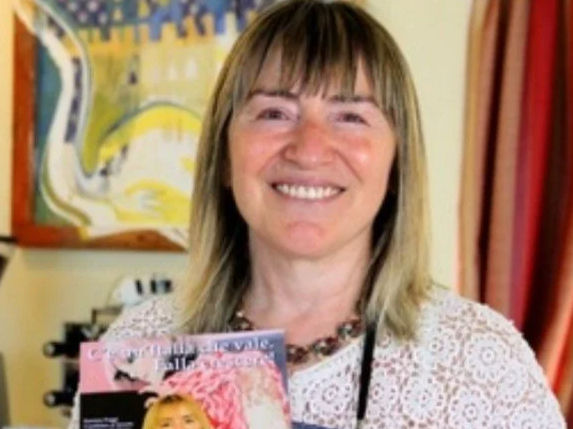
Patrizia Poggi is ACT Advisor, a native of Ravenna and has 30 years in the forefront to enhance the Italian heritage, art and culture sector, she is an art consultant and gallerist, formerly resident manager of the Relais Villa Roncuzzi, member of the Association of Social Promotion “Taste Italy Aps”, Ambassador of Knowledge and Flavors of Italy for Italy&Friends in Florence. For a fuller blog on the cultural significance of Ravenna – please see Patrizia’s last ACT piece.
This blog was published by Marysia Zipser, Founder of Art Culture Tourism and ACT Ambassador
Please feel free to share this article blog via social media icon links and/or write any comments or questions in the Comment Box below. Thank you..
Links:
https://www.ravennafestival.org/en/ https://newsteadabbey.org.uk/ https://www.visit-nottinghamshire.co.uk/
Basilica di San Vitale, Ravenna

























